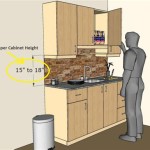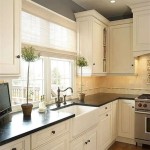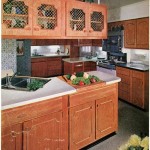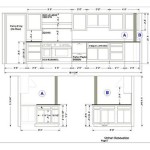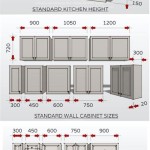Adding Moulding to Kitchen Cabinets: Enhancing Your Kitchen's Aesthetics
Adding moulding to kitchen cabinets is a simple yet effective way to elevate the overall design and aesthetics of your kitchen. Moulding, also known as trim, can transform plain cabinets into beautiful and sophisticated focal points. This process involves attaching decorative strips of wood or other materials to the edges, corners, and faces of cabinet doors and boxes. This seemingly small addition can significantly impact the visual appeal and character of your kitchen.
Moulding comes in various styles, sizes, and materials, offering a wide selection to suit any design preference and budget. From simple, traditional profiles to elaborate, contemporary designs, there's a moulding option to complement any kitchen style. Whether you desire a classic, farmhouse, modern, or minimalist aesthetic, adding moulding can enhance the visual appeal and create a cohesive and stylish kitchen space.
Benefits of Adding Moulding to Kitchen Cabinets
Beyond aesthetics, adding moulding to kitchen cabinets offers several practical benefits. Moulding can help to visually unify disparate elements in your kitchen, creating a more harmonious and cohesive design. It can also add depth and dimension to flat cabinet doors, creating a more interesting and visually appealing surface. Additionally, moulding can help to conceal imperfections or minor damage on cabinet surfaces, providing a clean and polished look.
Types of Moulding for Kitchen Cabinets
The choice of moulding for your kitchen cabinets depends on your personal preferences and the overall style of your space. Here are some popular types of moulding used for kitchen cabinets:
- Casing Moulding: This type of moulding is often used to frame doors and windows, but it can also be used to accentuate cabinet doors. Casing moulding typically has a simple profile with a flat face and a rounded edge.
- Crown Moulding: Crown moulding is a decorative moulding that is typically used to create a crown-like effect at the top of walls and cabinets. It often has a more ornate profile with curves and details.
- Chair Rail Moulding: Chair rail moulding is a decorative moulding that is typically installed along walls to protect them from chairs and other furniture. It can also be used to accentuate cabinet doors and drawers.
- Beadboard Moulding: Beadboard moulding is a type of moulding that creates a traditional, cottage-style look. It features a series of vertical grooves or beads that add texture and visual interest to cabinets.
- Stile and Rail Moulding: This type of moulding is often used to create raised panels on cabinet doors. It consists of vertical stiles and horizontal rails that create a grid-like pattern.
Choosing the Right Moulding for Your Kitchen
When selecting moulding for your kitchen cabinets, consider the following factors:
- Overall Kitchen Style: Choose a moulding style that complements the overall aesthetic of your kitchen. For example, if your kitchen has a traditional style, consider using simple, classic mouldings like casing or beadboard.
- Cabinet Style: The style of your cabinets will also influence the type of moulding you choose. For example, if your cabinets have a shaker style, you might choose a simple, flat moulding to complement the clean lines.
- Personal Preference: Ultimately, the best way to choose the right moulding is to trust your instincts and select a style that you find appealing.
Installing Moulding on Kitchen Cabinets
Installing moulding on kitchen cabinets is a relatively straightforward process that can be done with basic woodworking tools. The steps involved typically include measuring and cutting the moulding to size, attaching it to the cabinets using wood glue and finishing nails, and then sanding and painting or staining the moulding to match the cabinets.
If you are not comfortable with DIY projects, it is always advisable to hire a professional carpenter or contractor to handle the installation. A professional can ensure a high-quality finish and prevent any potential damage to your cabinets.
Adding moulding to your kitchen cabinets is a cost-effective and transformative way to enhance the style and elegance of your kitchen. With careful planning and execution, this simple addition can create a more sophisticated and visually appealing space that you'll enjoy for years to come.

Adding Moldings To Your Kitchen Cabinets Remodelando La Casa

From Drab To Fab Adding Trim Cabinets

How To Add Trim And Paint Your Laminate Cabinets

Adding Molding To Old Cabinets Diy Tutorial Kitchen Cabinet Doors

From Drab To Fab Adding Trim Cabinets

Adding Shaker Trim To Flat Panel Cabinets Hometalk

Diy Kitchen Cabinet Upgrade With Paint And Crown Molding

Easy And Inexpensive Cabinet Updates Adding Trim To Cabinets Drawers The Rozy Home

Add Moulding To Flat Cabinet Doors Home Kitchens Cabinets Kitchen

How To Add Molding Cabinets For A Gorgeous Finish Inspiration Moms
Related Posts


